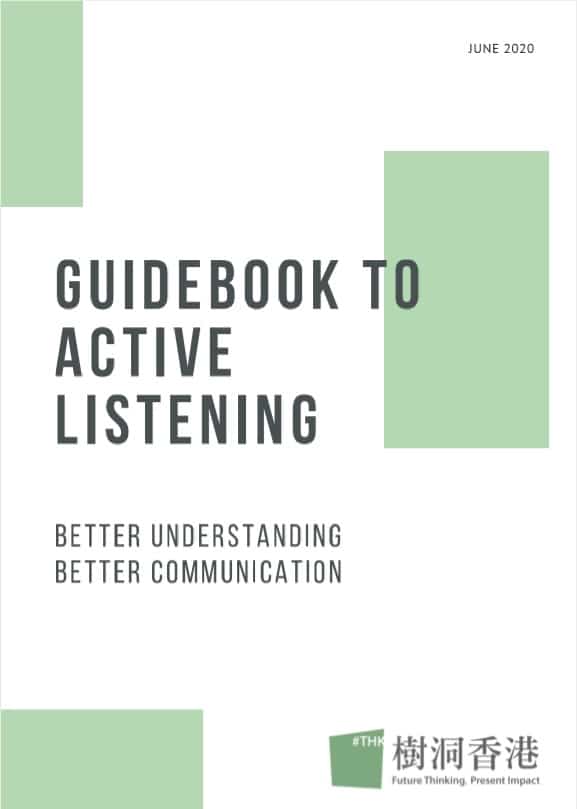
Get Guidebook to Active Listening for free!
Looking for a guide for communication skills? Download our printable PDF guidebook and enjoy peace of mind. The guidebook comes with in-depth analysis of the practical skills and ready-to-use debriefing questions that you can't find on the website. Training just couldn't have been easier!
Training Tool Summary

Guidebook to Active Listening
Active listening is a set of listening skills designed to facilitate communication. It is practiced by professionals in business, education and therapeutic settings. Internally, it helps establish an open and free communication atmosphere. It creates a comfortable conversation, where we can build rapport and know more about our clients.
Guidebook to Active Listening
Learning Objectives
- Non-judgmental and empathetic attitude
- Attending behavior
- Listening skills
Example of practical skills
Reflection of feeling
Identify the emotions expressed and give appropriate feedback. It creates a sense of being understood. Be mindful about the spoken words on emotions and the unspoken body language. Phrases such as "I feel that you are..." or "I heard that you are..." can be used to show care and attention. You could further talk about the context to demonstrate the understanding of the situation. As complex emotions may be expressed, an empathetic attitude is important to extract the underlying feelings.
Encouraging
Encouraging is 1 of the 3 skills useful in listening. It is done by both verbal and non-verbal expressions. Verbal tools include repeating keywords spoken and responding phrases like "uh-huh" and "mm-hmm". Non-verbal tools include a nod of head, smiling etc. These skills help promote elaboration and further sharing
